Soft Amish White Bread (Video, Beginner Friendly)
Amish white bread is a slightly rich, soft, yet sturdy yeast bread that’s perfect for beginners. I know bread recipes feel completely overwhelming, but this version (with video tutorial) has been successful for thousands of beginner bread bakers. You can master homemade bread!
Jump to Recipe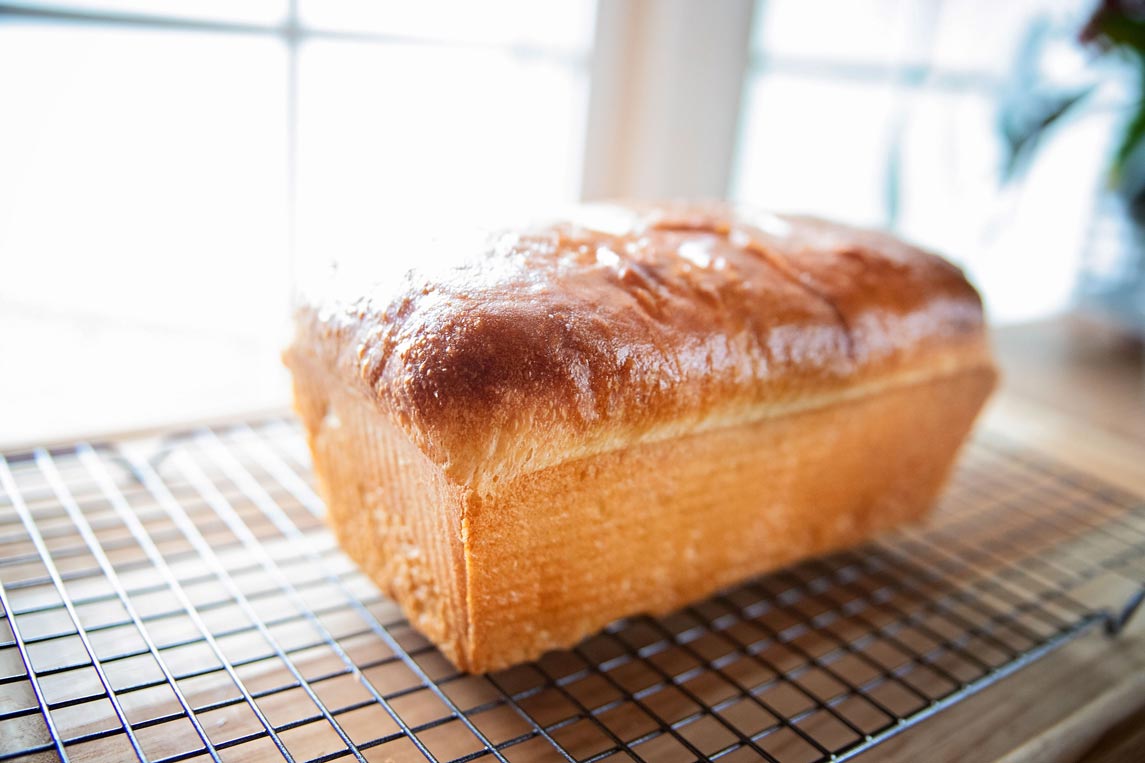
A bread baker for over 30 years (don’t tell anyone how old I am), I’ve taught beginner bread baking classes to dozens in my kitchen and to millions on YouTube. For every step in this post you can watch the companion video below and I encourage you to reference it often while mixing your first loaf.
I know all the things beginner bakers do wrong, and I’m going to help you fix those.
Watch the tutorial
Watch this video to see each step in action!
Table of contents
- Watch the tutorial
- 5 things beginner bakers do wrong and how to prevent them
- Common questions about Amish white bread
- For accuracy, measure your bread ingredients in grams
- Choose a loaf pan that heats evenly
- What your Amish white bread should look like at each stage
- Ideas for using stale bread
- Other ways to use your Amish white bread dough
5 things beginner bakers do wrong and how to prevent them
- Using water that’s too cold. Your yeast needs water slightly warmer than lukewarm. Like what you bathe a baby in, or about 110 degrees for those of you who don’t have kiddos. If it’s too cold, the yeast won’t activate or foam. This video shows you what yeast looks like when it’s alive. You can use active dry or instant yeast here. Activate them both in water the same way. Learn how to activate yeast in detail here.
- Cold ingredients will make rise time slow. Every ingredient you bake with needs to be room temperature. This includes your egg, and if you keep your flour in a freezer it needs to warm up too.
- Squishing the dough through your fingers and making a crazy mess. Your dough is not slime and you’re not a kindergartener. Keep your fingers closed like a scoop and work gently with the dough so it’s not stuck all between your fingers.
4. Smashing the dough too hard while kneading and making it sticky. Watch the video and notice that the dough isn’t getting smashed across the counter. Press down about 1/3-1/2 the depth of the dough. If you mash it too hard you’ll have a sticky mess. Learn more about kneading dough in this post.
5. Adding too much flour when kneading. This is so common when you start. I challenge you to use no more than an extra 1/3 cup of flour when kneading. Only sprinkle small bits on and under the dough as you go. Adding more than 1/3 cup of flour will make your bread heavy and crumbly after baking. If you knead lightly you won’t need too much flour.
Common questions about Amish white bread
You can swap half the white flour for whole wheat and it will turn out fine. You can’t sub more than half though without needing a recipe written for the behavior of whole wheat.
I like King Arthur bread flour. All purpose flour works just fine, your bread just won’t be as tall because it doesn’t have as much gluten.
I recommend that you do. Some have made it without it and they say it worked, but I can’t help thinking they missed out on some richness and moisture that the egg gives. Unless you’re allergic to eggs, leave it in.
You need some sort of sweetener and sugar was the classic ingredient. You can swap in a light honey if you’d rather but I haven’t tested it.
Instant yeast and active dry can be activated the same way. If you are a beginner, I recommend using either one as instructed in the recipe and activating it in water. I do not recommend using pizza dough or bread machine yeast and I don’t have any experience with fresh yeast.
Emphatically, absolutely no. Salt is a must.
Homemade bread will last about 3 days on your counter tightly wrapped. Never store bread in the refrigerator. You can freeze it with great success though! Slice it if you choose, then shape it back into a loaf and wrap it well in plastic wrap and two layers of foil or use an air tight bread box. Freeze for 6-8 weeks. Thaw at room temperature, in the toaster a slice at a time, or thaw all of it at once.

For accuracy, measure your bread ingredients in grams
Americans are the worst for not using scales. We do everything in cups/volume. But for bread and most baking recipes, how you measure that “cup” of flour can vary widely. Humidity also effects flour as moisture is absorbed from the air making the amount of moisture in your dough unpredictable.
That’s why using grams to weigh your ingredients means everyone gets the same amount of each whether they are in the tropics or the desert. Weighing ingredients is the key to success. You can pick up a scale at any grocery store for about $12 or you can get my favorite scale .
Choose a loaf pan that heats evenly
Believe it or not, glass loaf pans are supposed to be the best for bread. I can’t guarantee it won’t stick though–so use some parchment paper to line it. This glass pan is ideal. I’ve used USA Pans for years and love their durability but they are made from coated aluminum and I’m trying to get away from using aluminum when I cook.
What your Amish white bread should look like at each stage
Wait until your dough doubles in size before kneading. Watch your dough and not the clock. If a recipe says it should take an hour but your dough hasn’t risen and you’re sure your yeast was alive, just wait. Your dough will do its thing soon enough.
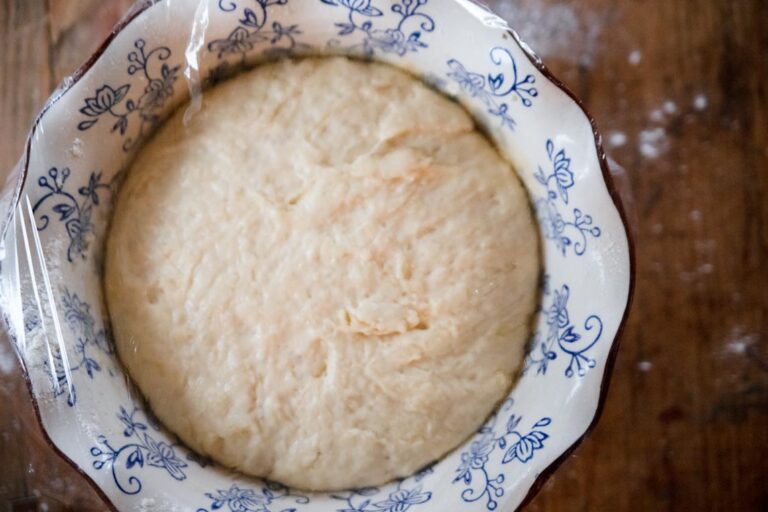
Your dough should be kneaded until it reaches window pane–when you can stretch a piece of it and see a bit of light through it without breaking. This takes longer with all purpose flour. You can see window pane in the video but plan to knead for 10 to 15 minutes. Then let the dough rest about 5 minutes before shaping.
Press the dough out to a loose rectangle then roll it up from one end. Pinch the seam shut and place it seam side down in your baking pan.
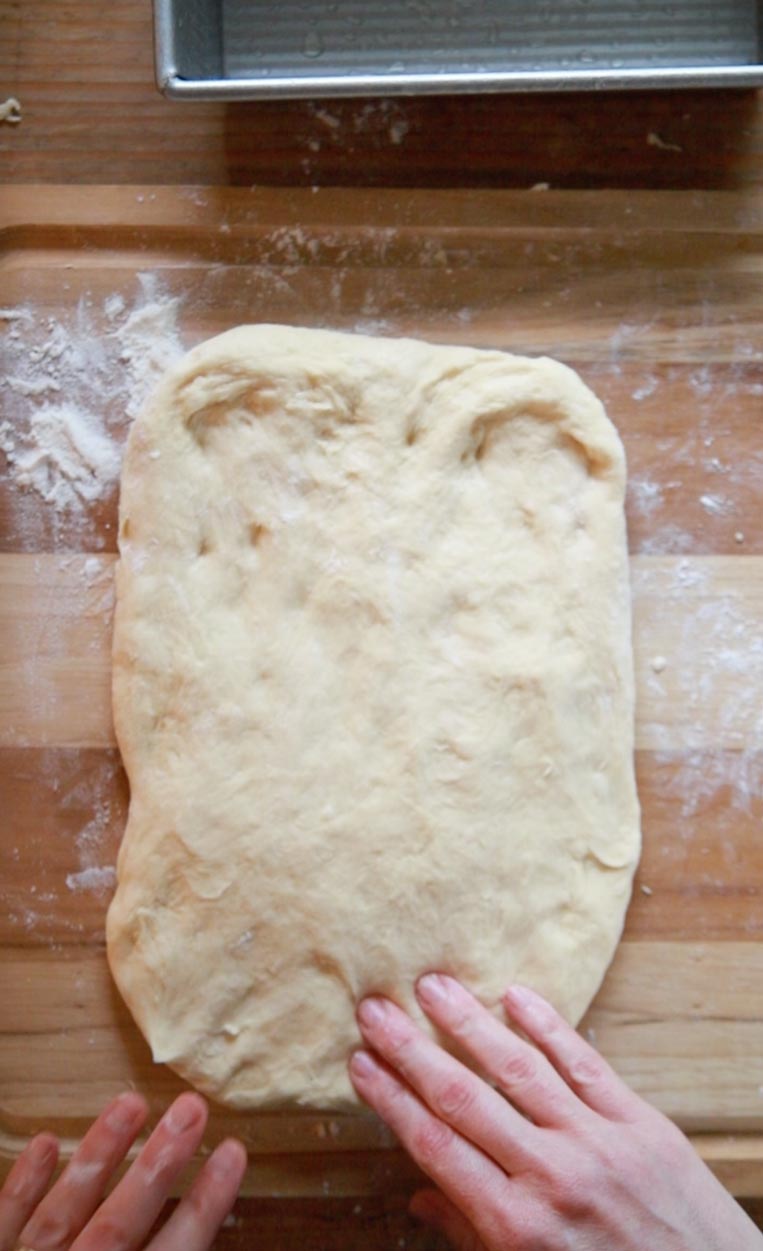
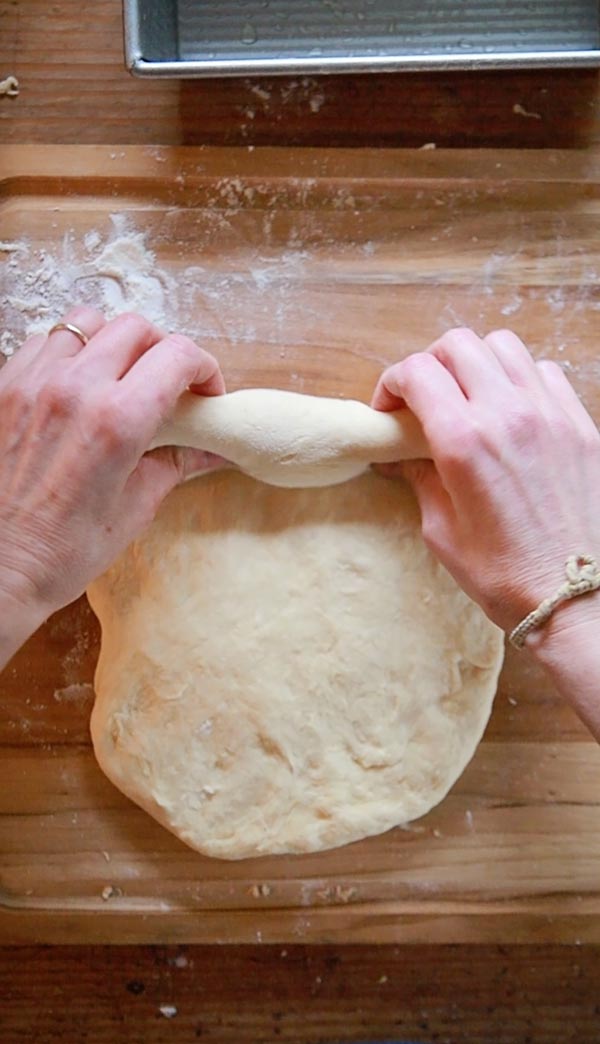
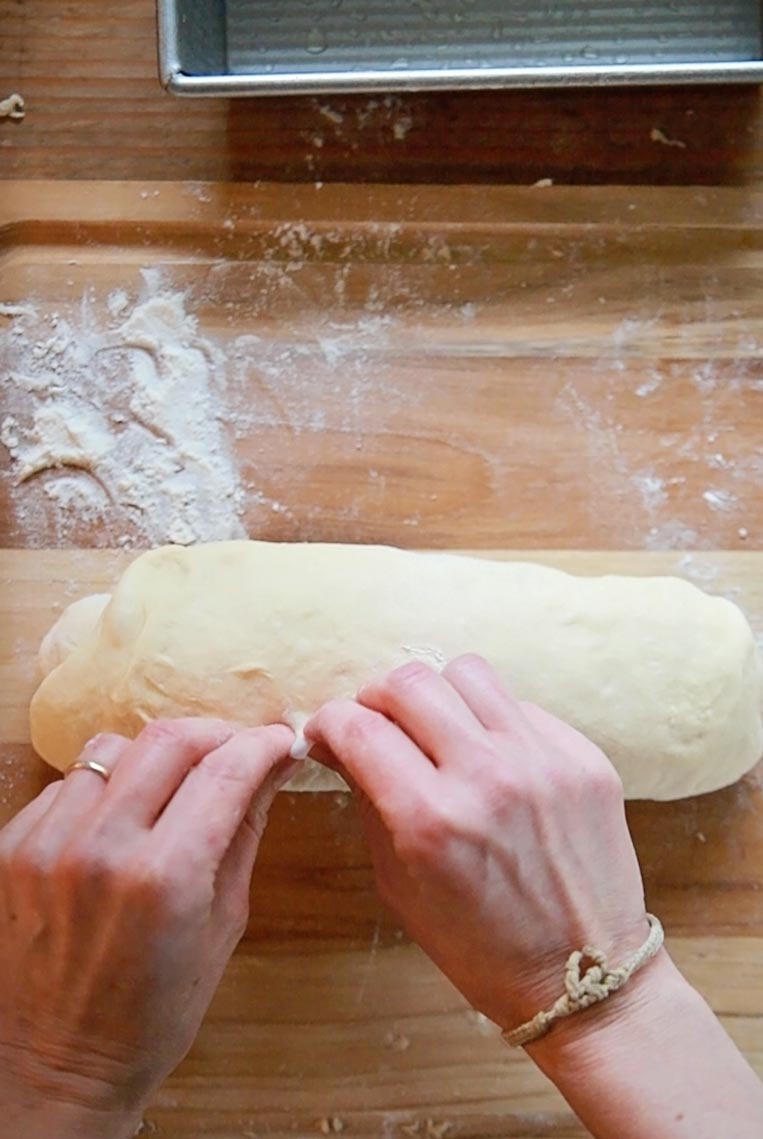
Let the dough rise uncovered until it’s about an inch above the rim of your pan or doubled in size. If you use a large loaf pan your dough won’t rise above the rim. If you decide to cover your amish white bread, use a damp towel or greased plastic wrap.
Take great care to make sure any cover doesn’t stick. Otherwise your homemade bread is ruined.
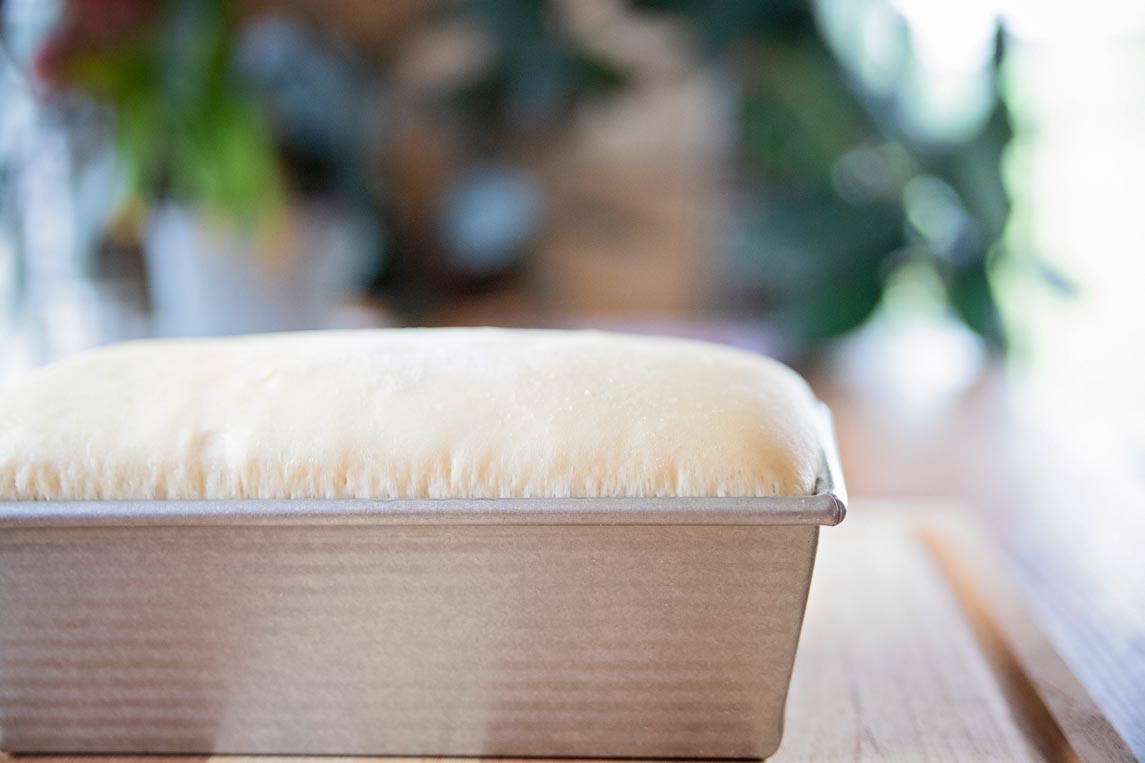
Bake your bread on the center rack in the middle of the rack (not pushed to the back or up near the door) for 25-30 minutes. You can take your bread’s temperature with a thermometer–it should read 190 or so if it’s done.
Tent your bread with foil during the last 10 minutes of baking if the crust is getting too dark.
Let it cool 5 minutes then turn it out on a rack to finish. Rub it over with a stick of butter to soften the crust.
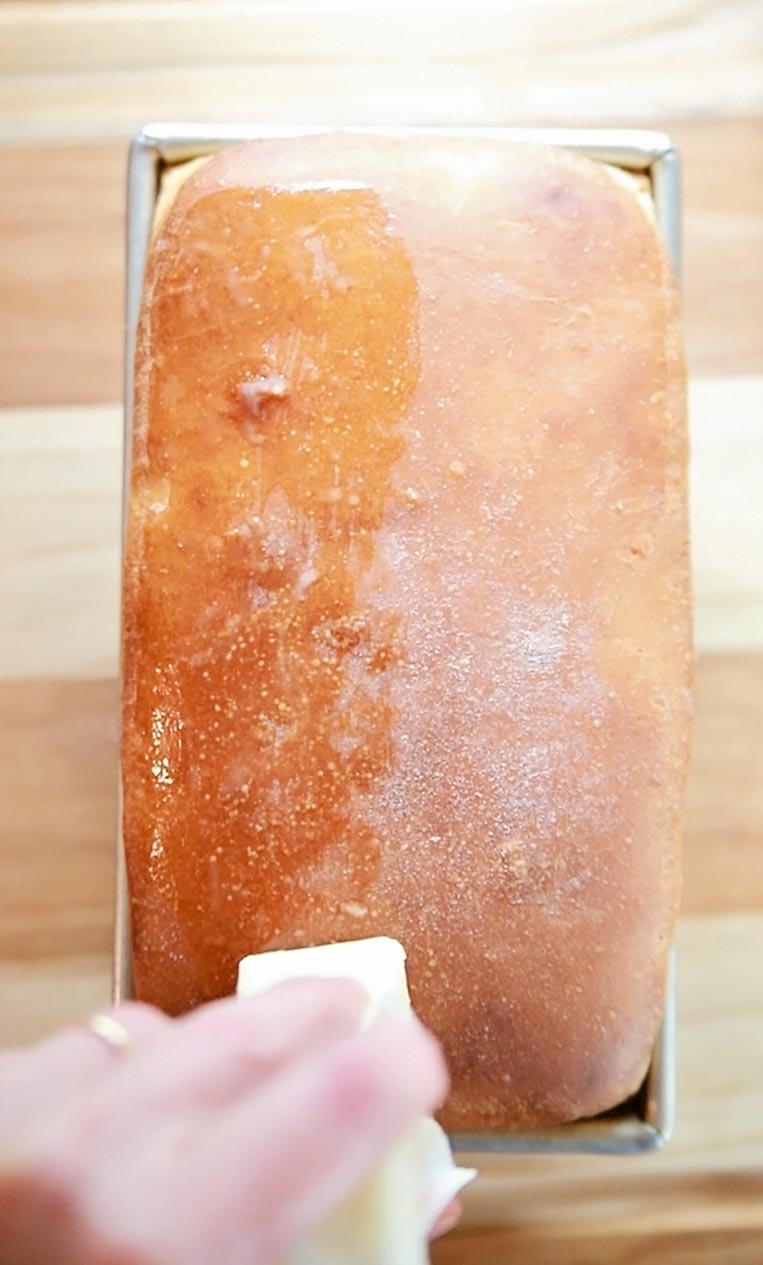
Ideas for using stale bread
Your homemade white bread will be heading toward stale in about 3 days. This really makes you think about all the junk in store bought loaves if they can last 6…8 weeks or more without molding. Gross! Make the most of your homemade efforts by using your stale bread too.
Stale bread makes amazing homemade croutons, or pulse your bread in a food processor and dry the crumbs out in a low oven (300 degrees) tossing often for bread crumbs. Store them in the freezer. Use bread cubes in an easy Panzanella salad so they can soak up the delicious flavors.
Other ways to use your Amish white bread dough

Soft Amish White Bread
Ingredients
- 1 cup lukewarm water (216 grams)
- 1 package active dry yeast (7 grams)
- 3 tablespoons sugar (50 grams)
- 1 egg
- 2 tablespoons flavorless oil (20 grams) I use avocado oil
- 3 1/2 cups bread flour (470 grams) all purpose will work
- 3/4 teaspoon salt (4 grams)
Instructions
- In a large bowl where you will be making your bread, add the water and yeast. Stir gently to combine and let it sit until you see some foam coming to the surface. This may take 5-15 minutes.
- Add the sugar and stir to combine. Add the oil and egg and use a fork to break the egg up.
- Add the flour and salt and stir to combine with a fork. Once it starts coming together, use your hands to work it in to a shaggy ball.
- Drizzle over a teaspoon of oil and pat it evenly over the surface. Cover with a damp towel or plastic wrap and let it rise until doubled in size. Just watch the dough and be patient but about an hour should do it.
- After the dough doubles, sprinkle the counter with a couple of tablespoons of flour and transfer the dough to it by using closed fingers like a scoop to scrape it from the bowl.
- Dust the top with another tablespoon of flour and knead the dough, sprinking the top and bottom with no more than 1/3 cup of flour until it is stretchy and you can see a bit of light through the dough when it's stretched–about 10 to 15 minutes of kneading.
- Let the dough rest five minutes then use your fingers to form it into a rectangle about as wide as your loaf pan. Roll it up like a sausage and pinch the seam closed. Place it seam side down in a greased and parchment paper lined loaf pan.
- Let the dough rise uncovered (see note 1) until it rises 1- 1 1/2 inches above the rim of the pan. About 45 mintues to an hour.
- 15 to 20 minutes before the bread is finished rising, preheat the oven to 400.
- Bake the bread on the center rack in the middle of the oven (not in the back, and not up near the door) 25-30 minutes. Tent with foil for the last 10 minutes if your bread starts to get too dark. You can take the temperature of your bread–it should be about 190 in the center when it's done.
- Transfer to a rack to cool 5 minutes in the pan, then turn it out and brush the top with butter for a softer crust. (Optional)
- Let the bread cool before slicing for the best texture inside.
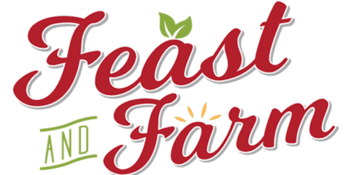
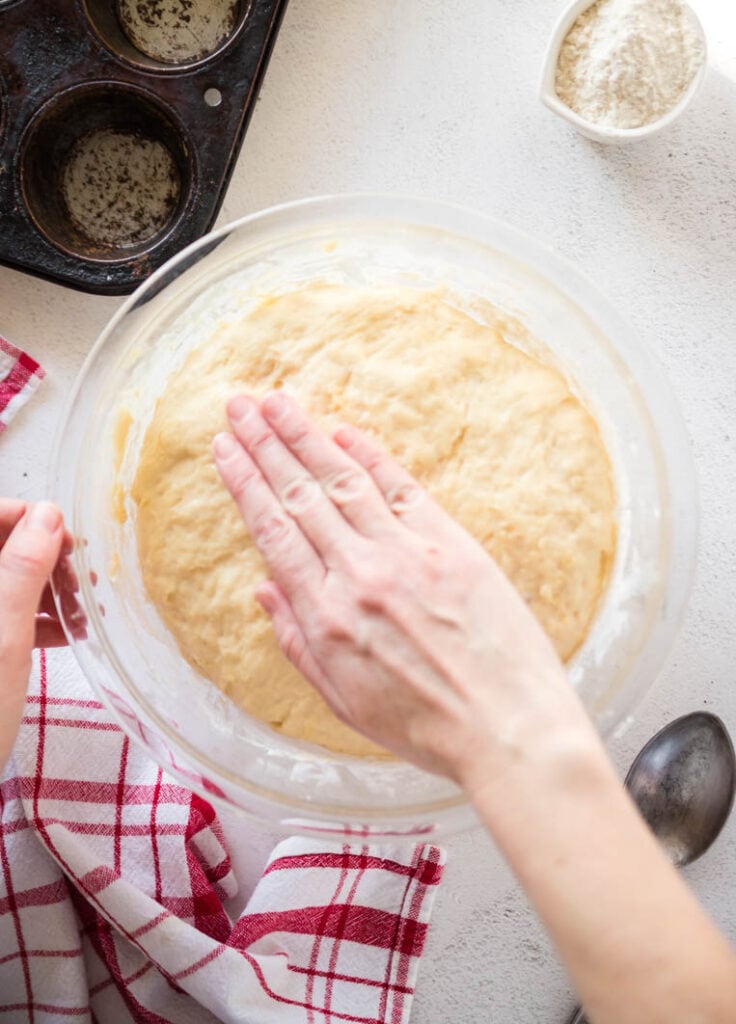


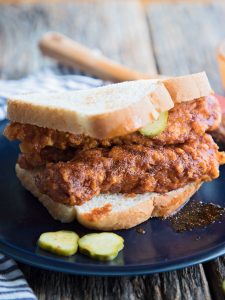

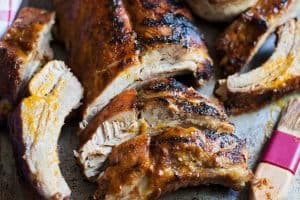
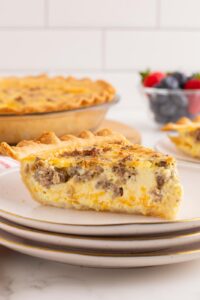
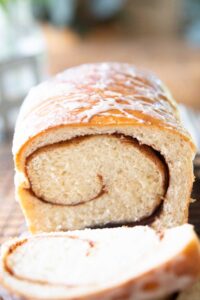
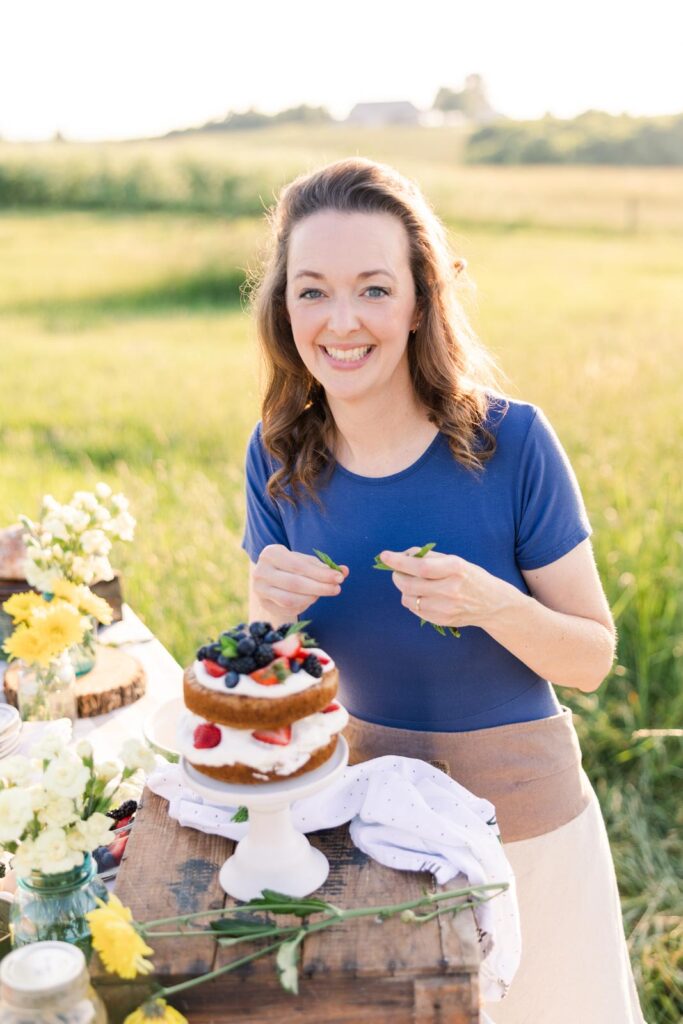
This recipe is perfect! This is my first loaf of white bread as I usually make sourdough. I will be using this recipe from now on. Thanks for sharing
I make a lot of sourdough too Demetrice! I’m glad you found a basic loaf to enjoy too. –Rachel
Do you have a bagel recipe? I would love to make bagel pizza for my grandchildren
I don’t right now, but I’ll work on one Toni. I have made them before and really like them! –Rachel
I like the look of this recipe but am concerned that the metric measurements are somewhat confusing.
So, for instance, it calls for 1 cup water, but mentions 216 grams. A cup is usually 240ml, and 240ml of water weighs 240grams. So I am not sure how large your cup measure actually is.
The recipe also calls for 3 tbsp sugar, and says 50grams, but it is generally accepted that 50g of sugar is 4 tbsp(1/4 cup).
Hey Geoff, thanks for the question. So as always, baking has so many variables and we try to eliminate as many of those as we can with accuracy and grams is a the best way to do that. This recipe was my mother’s and the same one used by my husband’s 100 year old great grandmother and when I learned it, it was measured in cups and evaluated just by hand feel and how the dough looked. Great grandma used a coffee cup to measure. 🙂 So I was very comfortable doing this recipe by eye. When I wrote it for the internet it was originally in cups and people didn’t like that so they asked for the gram measurements. Instead of taking the “generally accepted” amounts, I actually weighed each ingredient on my kitchen scale and made the recipe to make sure the “by eye” experience and the gram experience matched.
While I’m sure some great scientist took time to come up with standard amounts, I feel that there are still variables no one can control: Like what was the grind on the flour? How large was the egg, really? What about the sugar? (I use organic cane sugar which has a larger granule that refined white). I don’t know how we can ever account for all of those things.
Unlike a lot of bloggers (professional sites like America’s Test Kitchen and others take great pains for accuracy), I actually test and write my own recipes to make sure they work and many others either buy recipes that have been made and written by someone else, or they buy photos of another recipe and make up a recipe they have never tested and use the standardized measurements.
All that to say, my measurements are “off” because they match the proper hand and eye feel of the original. I hope that helps. –Rachel
@Rachel Ballard, Thank you so much for taking the time to include the metrics. I always weigh my ingredients in grams when baking. This is a discipline I learned with baking sourdough bread. 🥰. -Karen
You’re welcome Karen!
I just found your channel on you tube. I am new to bread making and really appreciate you sharing your recipe. I was wondering if I could use this recipe to make a jalapeno cheddar bread.
Probably Christina. I haven’t tried it but you will need to add more time to the second rise because adding anything to the dough weighs it down and makes it rise more slowly. Sometimes you need a sturdier “artisan” style crusty bread that has the structure to handle the add ons but you are welcome to try it. I’d grate the cheese and not put in cubes so things don’t sink. –Rachel
Hello Rachel,
I’m new to bread making & wanted to thank you for your thorough & easy to understand recipe!
I really like the flavor & softness of this bread. It will be my go to! 🙂 I used King Arthur’s bread flour. I like the slight crisp crust I get w/it.
That’s wonderful Carole! I’m so glad you enjoyed it! –Rachel
I love this bread. And I absolutely love the way you instruct. So very real and honest and above all, helpful. My family loved this bread and I learned more bread techniques here than in any other tutorial. I never get the last bit of kneading and placing in the pan right until now. The dough was silky and wonderful. Thank you. I will be following you for all my trials as I embark on baking!
Kevin
Thank you Kevin! I have several bread recipes here on the site you can check out anytime. –Rachel
Rachael ,
Been dozen years or so since last baked anything other than campfire bread. Decided to look at a
Quick recipe and stumbled on to your
Site. Learned to bake bread when i was a kid. Grandmother measured everything by handfuls splashes dashes and pinches. You had to watch real close and learn what amounts should look like. She made nine or more loaves every Saturday
Several out the door and up the road with a jar of jelly to neighbors in need. Never saw her make anything on other than a wood fired cook stove. Warmed you in the winter ran you out in the summer. Subsequently my bread baking was hit and miss.
Some times good sometimes bad but always smelled good and eatable.
Ruff old outdoor guy enjoys hearing
Your down home talk i judge to be a tad down Kentucky way.
Here is a request. How about a segment on salt raised bread.
Grandmother baked large loaf in a dish pan. Remember that aroma and flavor. Us kids would swarm that bread like yellow jackets on a slice of apple. Reckon my age some what betrayed by wood cook stove.
Miss them days.
Oh yeah now the bread turns out pretty darn good with the new kitchen scale and your help.
Keep up the good work Kid
Merry Christmas.
Old Bob
Hey Bob, you got the Kentucky part right! Good job 😉 Nice memories to have for sure. Food is far more than just to keep us alive. Merry Christmas to you as well! –Rachel
If I double the recipe, do I double the yeast also?
I have a doubled version of this recipe that was my grandmother’s and it calls for 2 packets of yeast. It works just fine. Yeasted doughs don’t always work well if we just increase the ingredients but I know in this particular case it’s fine. –Rachel
I just made this last evening and it turned out just fabulous! The wonderful aroma got to me before I could remember to take a pic and !poof!, too late now! The most perfect crumb and soooo soft! Pretty as I’ve ever made! This is definitely a keeper recipe and method. Love it!
I’m so glad it worked well for you Morris–it’s a tried and true recipe for sure! –Rachel
Your video is not available, can you resubmit?
It’s there Pauline. It was being pushed further down the page by my technology but it’s in a fixed spot now. –Rachel
@Rachel Ballard,
Nope, still doesn’t work. Well, the ‘tutorial’ link doesn’t. Is there another link to the entire video? Other links DO work, though.
Hey Daniel, I’ve checked the video on both mobile and desktop and it plays perfectly. It’s right there under “watch the tutorial” and when you click the “tutorial” link the screen barely moves because the video is right there above that text. You can watch it here on YouTube if needed, but I’m sure the video is working as intended. https://www.youtube.com/watch?v=phzRY8FDj4c Thanks! Rachel